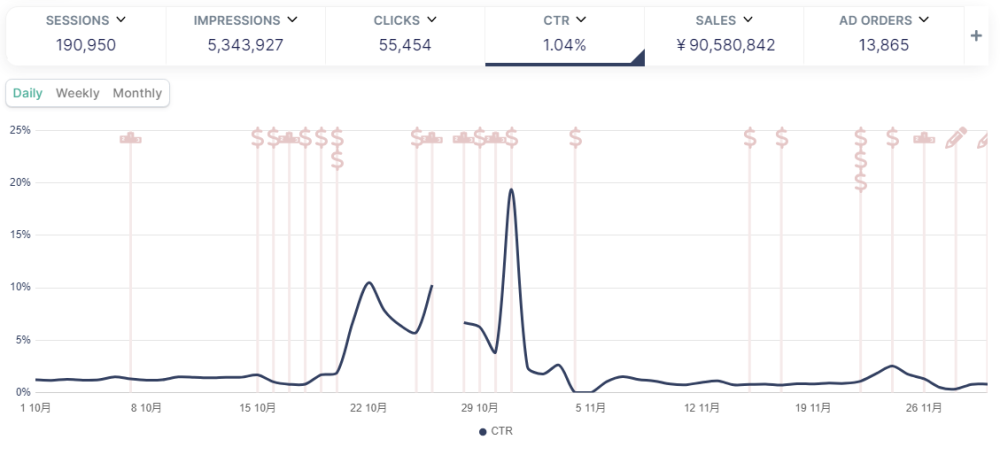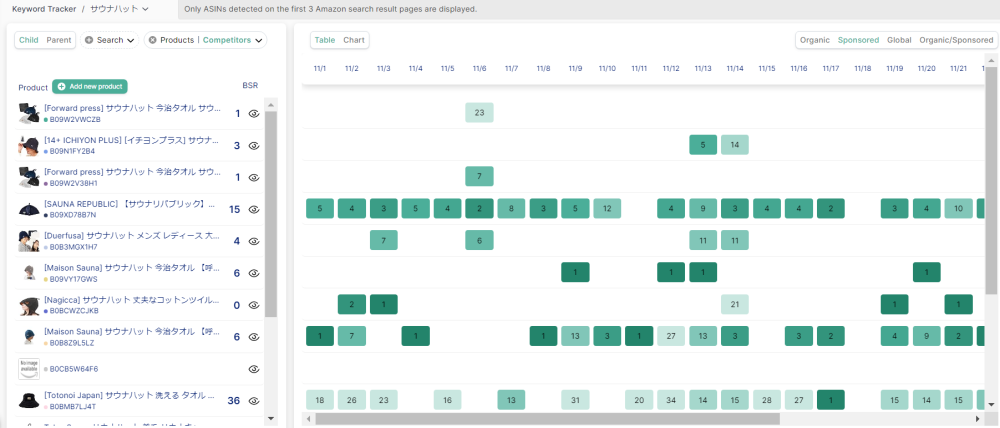Empower and Revitalize Japan for Next Generation
Enjoy our initiatives and ideas that embody SOPHOLA's Vision, Mission and Values.
We will update our employees' daily lives and thoughts so that you can understand the SOPHOLA culture.
m19|The Shortcut to Amazon Optimization: Understanding the ‘Amazon A10’ Algorithm
In sales on Amazon, how products appear on the search results page is crucial. The Amazon A10 algorithm determines that display order. This article will cover insights about ‘Amazon A10.’ Take a look for reference!
Amazon’s search algorithm was formerly known as ‘A9,’ but it has been updated to ‘A10.’ Amazon A9 was a system to rank products when users searched for keywords on the Amazon platform. Amazon’s ranking algorithm is fundamentally similar to Google’s search algorithm. It primarily considers keyword relevance, sales volume, customer reviews, pricing, shipping options, and various other factors. These factors significantly impact a product’s visibility and ranking in search results. With this algorithm redesign, there’s a focus on presenting more relevant and high-quality products to enhance the overall ‘customer experience.’
During the ‘A9’ phase, cramming keywords into product titles, descriptions, bullet points, or engaging in high bidding could win the ranking competition. However, with the new algorithm ‘A10,’ these strategies aren’t as effective. This is because Amazon has altered the weighting of ‘specific parameters.’ What are these ‘specific parameters’? Mastering these ‘specific parameters’ is crucial for navigating A10.
- Amazon A10 algorithm was updated to prioritize:1. Organic sales
2. Seller trustworthiness
3. Internal sales
4. Off-site sales
5. Click-through rate (CTR)
6. Sales performanceCompared to the A9 algorithm, Amazon’s A10 algorithm places higher emphasis on these factors. Furthermore, Amazon is assigning greater importance to organic searches, potentially reducing the significance of advertisements to the level observed during the A9 phase. However, advertising remains crucial to achieve high ratings based on the metrics that A10 considers important.
- How can we strategically tackle the updated six metrics?① Organic Sales
Sales that naturally occur through customer searches and browsing on the Amazon platform are considered organic sales. Organic sales are a crucial metric in Amazon’s SEO strategy under the A10 algorithm. Improving organic sales requires a multifaceted approach. Amazon sellers need to enhance product quality, optimize product detail pages, and improve customer service.② Seller Trustworthiness
Seller trustworthiness is another important metric considered by the Amazon A10 algorithm. It is linked to other parameters associated with the customer experience such as the product detail page, cart acquisition on Amazon, and ratings.
Here are tips to enhance Seller Trustworthiness:
1. Optimize Amazon Product Detail Pages:
Use high-quality, relevant images. Instead of stuffing keywords into the product detail page, it’s crucial to write compelling and relevant descriptions, bullet points, and titles. Having a diverse product catalog significantly enhances seller trustworthiness.
2. Improve Customer Service:
Metrics like product quality, responsiveness to customer comments, handling of complaints, and overall customer satisfaction contribute to building seller trustworthiness.
3. Acquire Amazon Cart:
Competitive pricing, positive seller ratings, and maintaining high inventory levels are necessary to secure Amazon cart acquisitions.
③ Internal Sales:
Internal sales are those generated within the Amazon platform without direct search. For instance, sales occurring through sections like “Frequently Bought Together” constitute internal sales, impacting product rankings.
④ Off-Site Traffic and Sales:
Off-site traffic and sales have a more substantial impact on rankings than before. These can originate from personal websites, social media channels, email marketing campaigns, collaborations with influencers, relevant ads, etc. Redirecting external traffic to Amazon listings proves more effective for sales and visibility compared to solely running and managing ads on Amazon.
⑤ Click-Through Rate (CTR):
CTR is a crucial metric used in Amazon ad management, aiding the A10 algorithm in assessing product relevance and popularity.
Here are tips related to CTR:
1. Use catchy product titles and analyze competitors’ keywords.
2. Set competitive prices for products.
3. Utilize high-quality, appealing images for products.
4. Check the ASIN Event Timeline on the m19 dashboard.
This feature displays timelines of significant events related to ASINs such as promotions, discounts, or changes (like images or prices). Understanding how these alterations affect ASIN performance and sales can be deciphered via the A10 algorithm. For instance, if sales of a particular ASIN drop, checking its Event Timeline might reveal changes in price or images. Additionally, this function can be used for A/B testing to identify user preferences and improve CTR.
*For instance, use symbols like a dollar sign for price changes, a camera icon for image alterations, or a podium symbol for review score changes.

⑥ Sales Performance
Sales performance includes the number of sales, frequency of sales, and consistency of sales over time. The A10 algorithm aims to display products with high popularity and customer demand.
Conclusion
Focusing on both the product and the customer is crucial. Overall, while A9 and A10 share some similarities, the Amazon A10 algorithm optimizes the customer experience by displaying products highly likely to match customer searches. For Amazon sellers, prioritizing customers and delivering superior products and services is paramount.
By utilizing the “Keyword Tracker” in m19, you can assess the effectiveness of your organic and sponsored keyword strategies (including rankings of your own/competitor products per keyword, whether ads are running or not, estimated bid amounts based on ranking, etc.). We also offer trials, so feel free to give it a try!
*Keyword Tracker:

Kaori Iino
Executive Officer
SOPHOLA, Inc
